Two macabre figures bookend ‘Anatomy: A Matter of Death and Life’, an exhibition at the National Museum of Scotland in Edinburgh. The first, staring down visitors as they enter, is a life-size anatomical figure in papier mâché from the workshop of the 19th-century French model-maker Louis Auzoux. Painted to show the courses of the veins and arteries, this gruesome teaching aid, manufactured for the use of medical students, makes for an arresting opening to an exhibition that highlights Edinburgh’s historical contributions to the understanding of human anatomy. The other figure, representing the darker side of the story, is the preserved skeleton of William Burke, the serial killer hanged and publicly dissected in January 1829, having murdered more than a dozen people and sold their bodies to the city’s medical demonstrators. (His accomplice, William Hare, escaped the same fate by turning king’s evidence.)
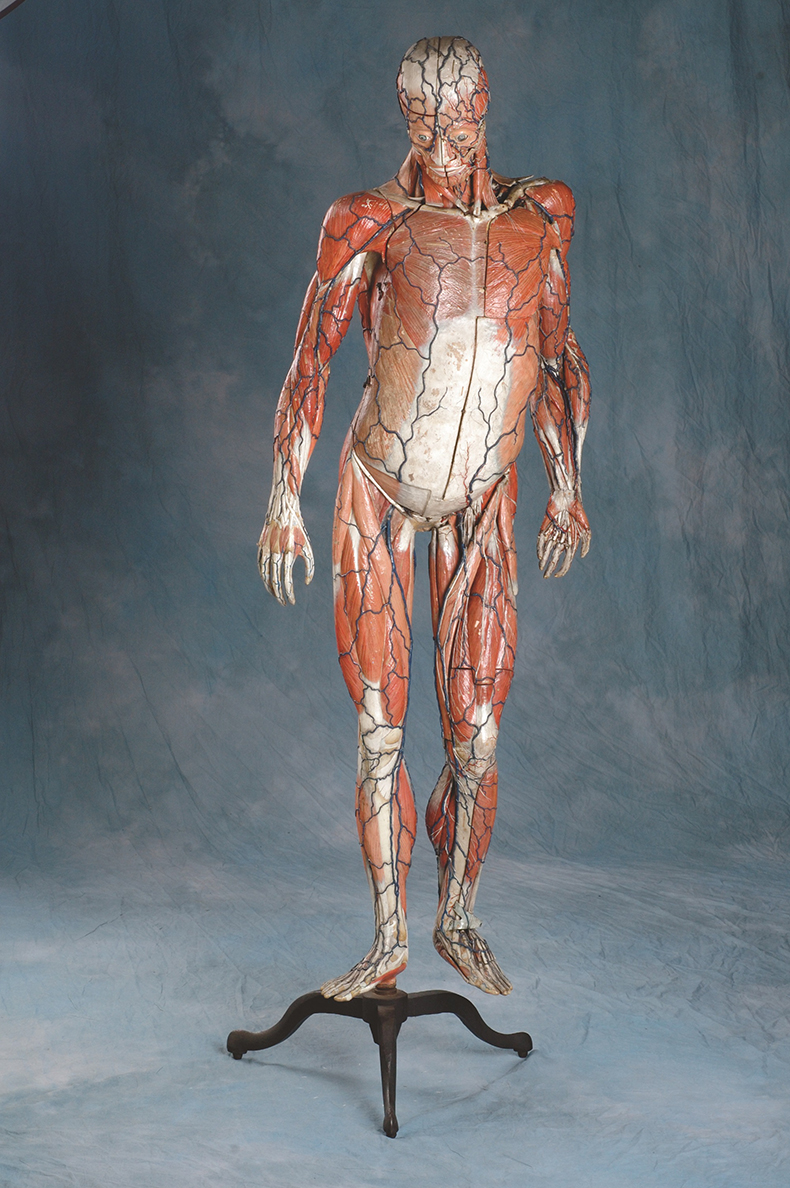
A 19th-century papier-mâché model by Louis Auzoux. University of Aberdeen Museums and Special Collections
‘Anatomy’ traces the history of medical dissection from the 16th century to the present day. It begins with Leonardo da Vinci’s delicate studies of musculature, organs, bones and nerves, explores the anatomy theatres of early modern Europe, and then homes in on Enlightenment Edinburgh as a world-leading centre of medical and scientific education. By the middle of the 18th century the medical men who lectured on the secrets of the human body had acquired a kind of celebrity status. Their lectures were attended not only by the city’s medical students, but by philosophers, artists and curious members of the general public.
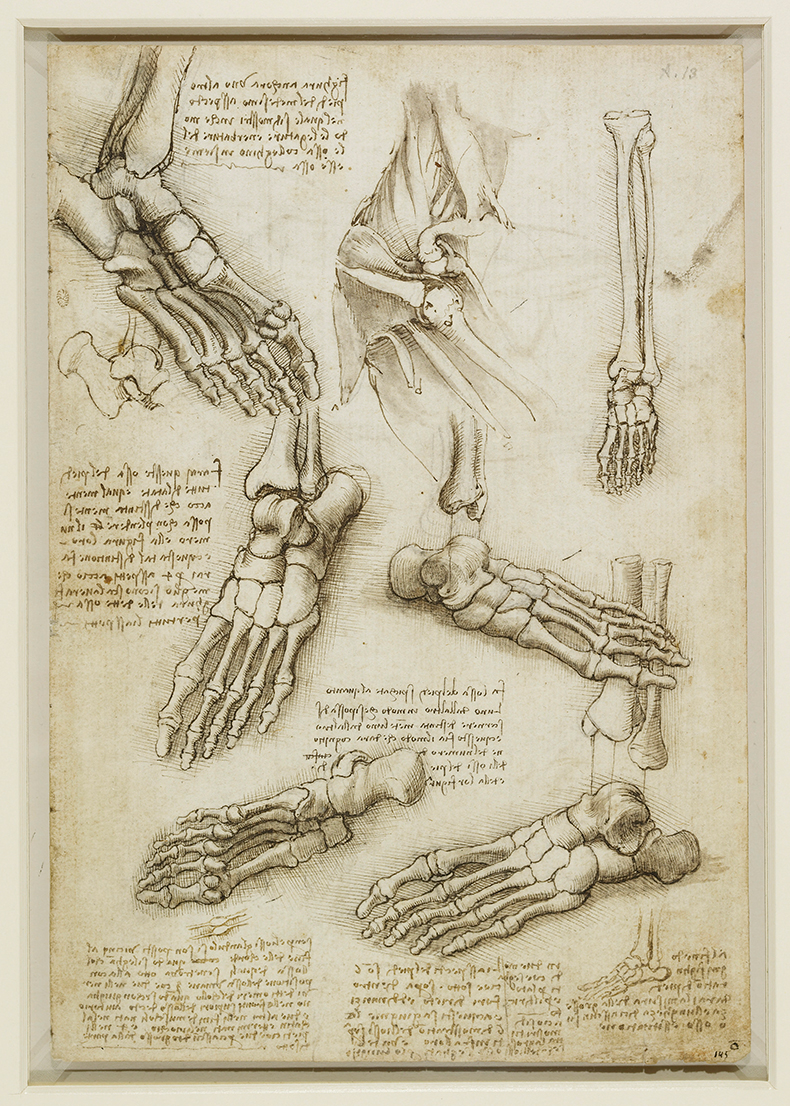
The bones of the foot and shoulder (c. 1510–11), Leonardo da Vinci. Royal Collection Trust. Photo: © Her Majesty Queen Elizabeth II 2021
The popularity of these public lectures drove demand for bodies. This demand was sometimes satisfied by legal means (after 1752, the corpses of executed murderers were made available for anatomical study), but the perennial shortage of appropriate cadavers left a gap in the market for enterprising scoundrels. Armed with dark lanterns and wooden shovels – examples of which are among the exhibits preserved and collected here – enterprising ‘resurrection men’ descended on the graveyards of Edinburgh and further afield, hoisting bodies from the ground for sale to medical students and their professors. In this respect, the crimes of Burke and Hare stood out only because they preferred to dispatch their unfortunate victims themselves rather than going to the trouble of exhumation.
While ‘Anatomy’ sometimes seems like an exhibition of two halves – anatomical science on the one hand and bodysnatching on the other – that double emphasis keeps in view the grim reality behind the intellectual and scientific advances of the Enlightenment. If Edinburgh takes justifiable pride in its contributions to scientific knowledge, the great achievement of this exhibition is to remind us of how a large part of that knowledge was extracted, often without consent, from the bodies of the dead. It also shows how the bodysnatchers’ trade was made economically viable by the willingness of unscrupulous anatomical demonstrators to accept bodies for their dissecting rooms without asking awkward questions about provenance. Behind the soiled hands of men like Burke and Hare lay what another son of Enlightenment Edinburgh – the economist Adam Smith – had called the ‘invisible hand’ of the market.
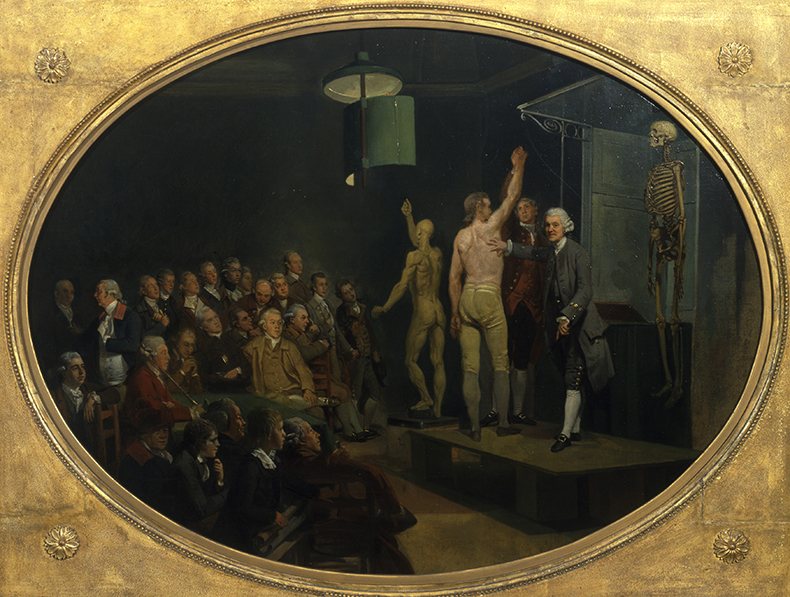
Dr William Hunter teaching anatomy at the Royal Academy (c. 1772), Johann Zoffany. Royal College of Physicians, London
The dissection of human cadavers is still crucial to the education of physicians and pathologists, though – as the exhibition demonstrates in a fascinating final room – the bodies used for this purpose are now sourced exclusively by means of donation. There is a sensitive film presentation featuring a woman who, like her late husband, has agreed to donate her body to be used as one of these ‘silent teachers’, with commentary from the current professor of anatomy at Edinburgh University.
This is a rich exhibition, international in scope but making the most of the unique contributions of Edinburgh to the history of medical science. It includes lighter moments, such as the taxidermied remains of a platypus dispatched to Edinburgh in the 1820s for dissection by the anatomist Robert Knox (later notorious as the client of Burke and Hare), and an account of the 1815 dissection of a beluga whale conducted by the Reverend John Barclay, who overcame the smell of decomposition by ‘regaling his nostrils with copious infusions of snuff’. More widely, it traces a fascinating web of connections between visual artists and medical practitioners, showing how their contributions to medical science helped not only to transform the iconography of death, but to unlock the secrets of the living body.
‘Anatomy: A Matter of Life and Death’ is at the National Museum of Scotland, Edinburgh, until 30 October.
Unlimited access from just $16 every 3 months
Subscribe to get unlimited and exclusive access to the top art stories, interviews and exhibition reviews.

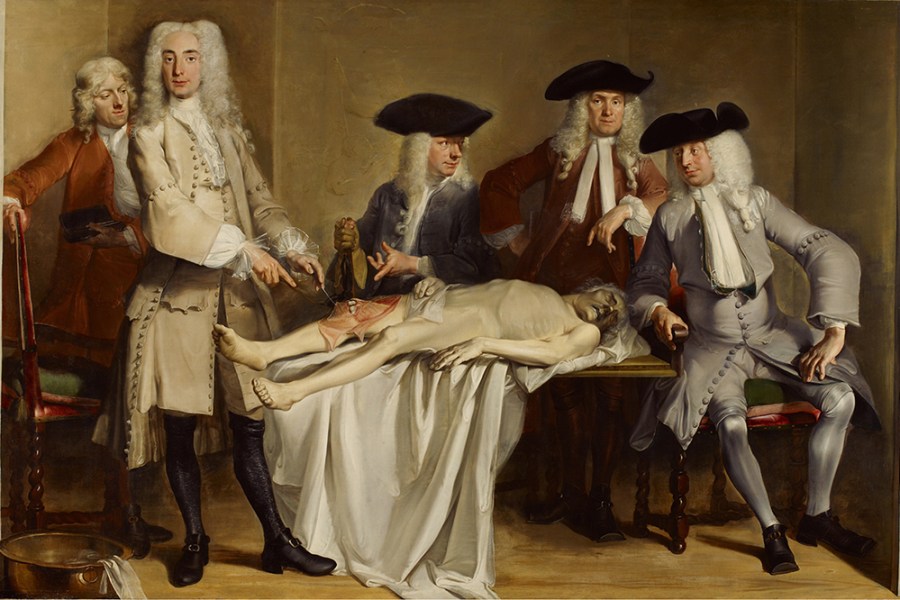
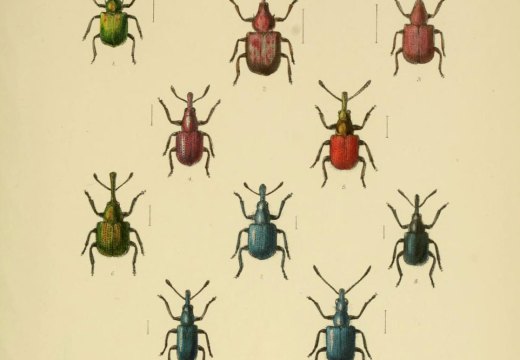
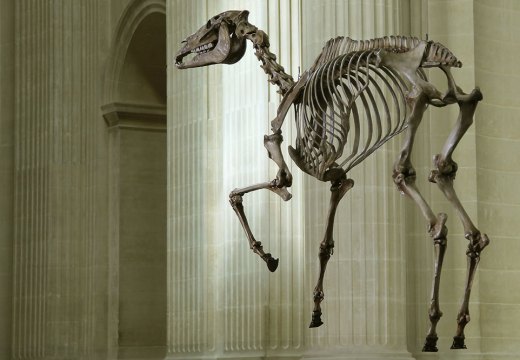
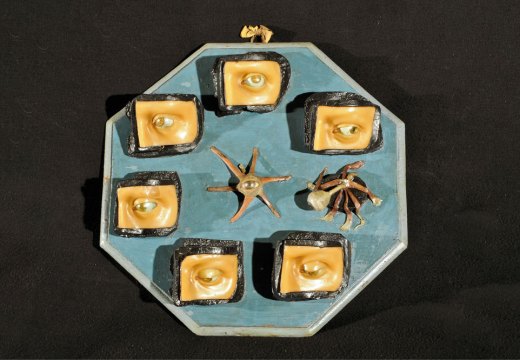









![Masterpiece [Re]discovery 2022. Photo: Ben Fisher Photography, courtesy of Masterpiece London](http://www.apollo-magazine.com/wp-content/uploads/2022/07/MPL2022_4263.jpg)
It’s time for the government of London to return to its rightful home